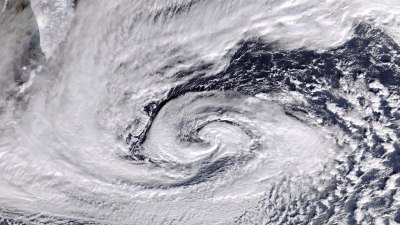The Role of Oceans in Heatwaves
Explore how oceans influence the formation and intensity of heatwaves worldwide.

This image was created with the assistance of Freepik
Heatwaves are increasingly recognized as extreme climate events, affecting ecosystems, human health, and economies across the globe. One of the critical yet often overlooked factors influencing the occurrence and severity of heatwaves is the role of oceans. Covering more than 70% of the Earth's surface, oceans significantly impact weather patterns and climate systems. Understanding how oceans interact with atmospheric conditions is essential for developing effective climate adaptation strategies.
Basics of Heatwaves
Heatwaves are defined as prolonged periods of excessively high temperatures, which can be measured in relation to the usual climate of a specific region. While heatwaves are a natural occurrence, the increasing frequency, duration, and intensity can largely be attributed to climate change and its multifaceted interactions with various environmental factors.
Ocean Temperatures and Heatwaves
The oceans serve as a massive heat reservoir, absorbing around 30% of the carbon dioxide emissions and more than 90% of the excess heat resulting from global warming. As ocean temperatures rise, they can have significant cascading effects on weather systems. Warmer ocean waters lead to increased evaporation, which can intensify humidity levels in the atmosphere. This heightened moisture contributes to the formation of heatwaves by trapping heat and preventing the cool temperatures typical of nighttime from occurring.
El Niño and La Niña Events
Oceanic phenomena such as El Niño and La Niña also play a crucial role in shaping global weather patterns, including heatwaves. During an El Niño event, warmer-than-average ocean temperatures in the central and eastern Pacific region can disrupt weather patterns and lead to more frequent and intense heatwaves in various regions around the world. Conversely, La Niña events, characterized by cooler-than-average sea surface temperatures, can lead to reduced heatwave occurrences in some areas but may also exacerbate drought conditions elsewhere, contributing indirectly to heat extremes.
Ocean Currents and Their Impact
Ocean currents significantly influence regional climate conditions, affecting how heat is distributed around the globe. For example, the Gulf Stream transports warm water from the tropics to the North Atlantic, influencing weather patterns in Europe and North America. Changes in these currents, often driven by climate change, can disrupt the balance of heat distribution, leading to localized heatwaves. Studies have shown that shifts in major ocean currents contribute to increased temperatures in some regions, intensifying the likelihood of heatwaves and their duration.
The Role of Coastal Regions
Coastal regions are particularly affected by the interaction between ocean and atmospheric conditions. The contrast between land and sea temperatures can create localized weather patterns that amplify heatwaves. The coastal heat island effect occurs when urban areas near coastlines experience higher temperatures than their rural counterparts, due to factors such as urban density and land use changes. Understanding these dynamics is crucial for coastal urban planning and heat management strategies.
Thermal Expansion and Sea Level Rise
As ocean temperatures rise, thermal expansion occurs, leading to higher sea levels. The increasing sea levels can fuel more extreme weather events, including heatwaves. Furthermore, the interaction between rising sea levels and coastal infrastructure can exacerbate heat stress in urban areas, indirectly influencing heatwave intensity and duration. Coastal cities need to integrate sea level rise considerations into their climate adaptation plans to mitigate these risks.
Feedback Mechanisms
Oceans and the atmosphere are engaged in complex feedback mechanisms that can amplify heatwave effects. For instance, as temperatures rise, ice melt contributes to changes in ocean salinity, which can, in turn, alter ocean currents and disrupt established heat distributions. These feedback loops can create a more conducive environment for intense heatwaves, posing challenges for predictive climate modeling and disaster preparedness.
Impact on Marine Ecosystems
Heatwaves are not only a terrestrial concern; they also have profound impacts on marine ecosystems. Coral reefs, which thrive in specific temperature ranges, are particularly vulnerable to heatwaves. Elevated ocean temperatures can lead to coral bleaching, severely affecting biodiversity and marine life. The disruption of marine food webs due to heatwave events can have far-reaching implications for fisheries and coastal communities reliant on them for their livelihoods.
Human Health and Economies
Human health is undeniably impacted by heatwaves exacerbated by ocean effects. Prolonged exposure to extreme temperatures can increase the risks of heat-related illnesses and fatalities. Vulnerable populations, such as the elderly and those with pre-existing health conditions, are particularly at risk. Economically, heatwaves can lead to disruptions in agriculture, increased energy demands for cooling, and significant damages to infrastructure. Understanding the interplay between oceans and heatwaves is crucial for public health planning and emergency responses.
Mitigation and Adaptation Strategies
To combat the intensified heatwave phenomenon linked to oceanic influences, both mitigation and adaptation strategies are essential. Mitigation efforts focused on reducing greenhouse gas emissions to slow ocean warming are crucial. Adaptation strategies should involve enhancing urban resilience, such as increasing green spaces, improving water management systems, and establishing cooling centers during extreme heat events. Collaborating with marine scientists can aid in developing comprehensive strategies to address the consequences of marine heatwaves.
In summary, the role of oceans in heatwaves is a complex and multi-dimensional issue that warrants more attention in climate discussions. The interactions between ocean temperatures, currents, and atmospheric conditions influence the frequency and severity of heatwaves globally. Addressing these challenges requires a multifaceted approach, integrating scientific knowledge from both oceanography and climate science to inform policy decisions and community actions. As the climate continues to change, understanding the oceans' vital role in shaping heatwave patterns will be essential for fostering resilience against these climate extremes.











